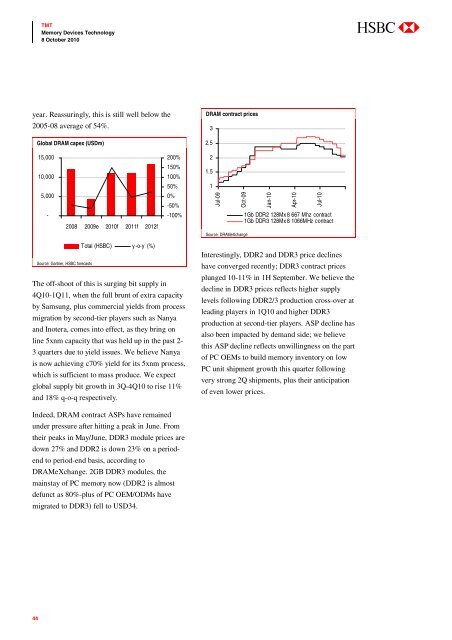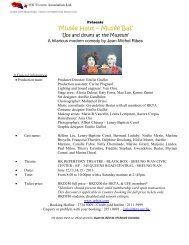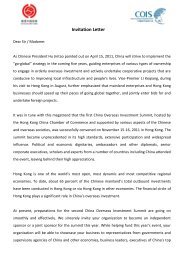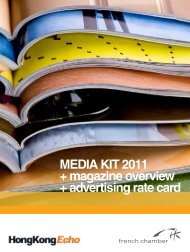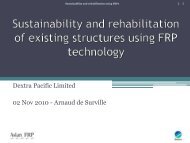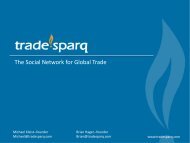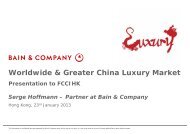You also want an ePaper? Increase the reach of your titles
YUMPU automatically turns print PDFs into web optimized ePapers that Google loves.
TMT<br />
<strong>Memory</strong> Devices Technology<br />
8 October 2010<br />
abc<br />
year. Reassuringly, this is still well below the<br />
2005-08 average of 54%.<br />
Global DRAM capex (USDm)<br />
DRAM contract prices<br />
3<br />
2.5<br />
15,000<br />
200%<br />
2<br />
10,000<br />
150%<br />
100%<br />
1.5<br />
50%<br />
1<br />
5,000<br />
-<br />
2008 2009e 2010f 2011f 2012f<br />
0%<br />
-50%<br />
-100%<br />
Jul-09<br />
Oct-09<br />
Jan-10<br />
Apr-10<br />
Jul-10<br />
1Gb DDR2 128Mx 8 667 Mhz contract<br />
1Gb DDR3 128Mx 8 1066MHz contract<br />
Source: DRAMeXchange<br />
Source: Gartner, HSBC forecasts<br />
Total (HSBC) y-o-y (%)<br />
The off-shoot of this is surging bit supply in<br />
4Q10-1Q11, when the full brunt of extra capacity<br />
by Samsung, plus commercial yields from process<br />
migration by second-tier players such as Nanya<br />
and Inotera, comes into effect, as they bring on<br />
line 5xnm capacity that was held up in the past 2-<br />
3 quarters due to yield issues. We believe Nanya<br />
is now achieving c70% yield for its 5xnm process,<br />
which is sufficient to mass produce. We expect<br />
global supply bit growth in 3Q-4Q10 to rise 11%<br />
and 18% q-o-q respectively.<br />
Interestingly, DDR2 and DDR3 price declines<br />
have converged recently; DDR3 contract prices<br />
plunged 10-11% in 1H September. We believe the<br />
decline in DDR3 prices reflects higher supply<br />
levels following DDR2/3 production cross-over at<br />
leading players in 1Q10 and higher DDR3<br />
production at second-tier players. ASP decline has<br />
also been impacted by demand side; we believe<br />
this ASP decline reflects unwillingness on the part<br />
of PC OEMs to build memory inventory on low<br />
PC unit shipment growth this quarter following<br />
very strong 2Q shipments, plus their anticipation<br />
of even lower prices.<br />
Indeed, DRAM contract ASPs have remained<br />
under pressure after hitting a peak in June. From<br />
their peaks in May/June, DDR3 module prices are<br />
down 27% and DDR2 is down 23% on a periodend<br />
to period-end basis, according to<br />
DRAMeXchange. 2GB DDR3 modules, the<br />
mainstay of PC memory now (DDR2 is almost<br />
defunct as 80%-plus of PC OEM/ODMs have<br />
migrated to DDR3) fell to USD34.<br />
44


